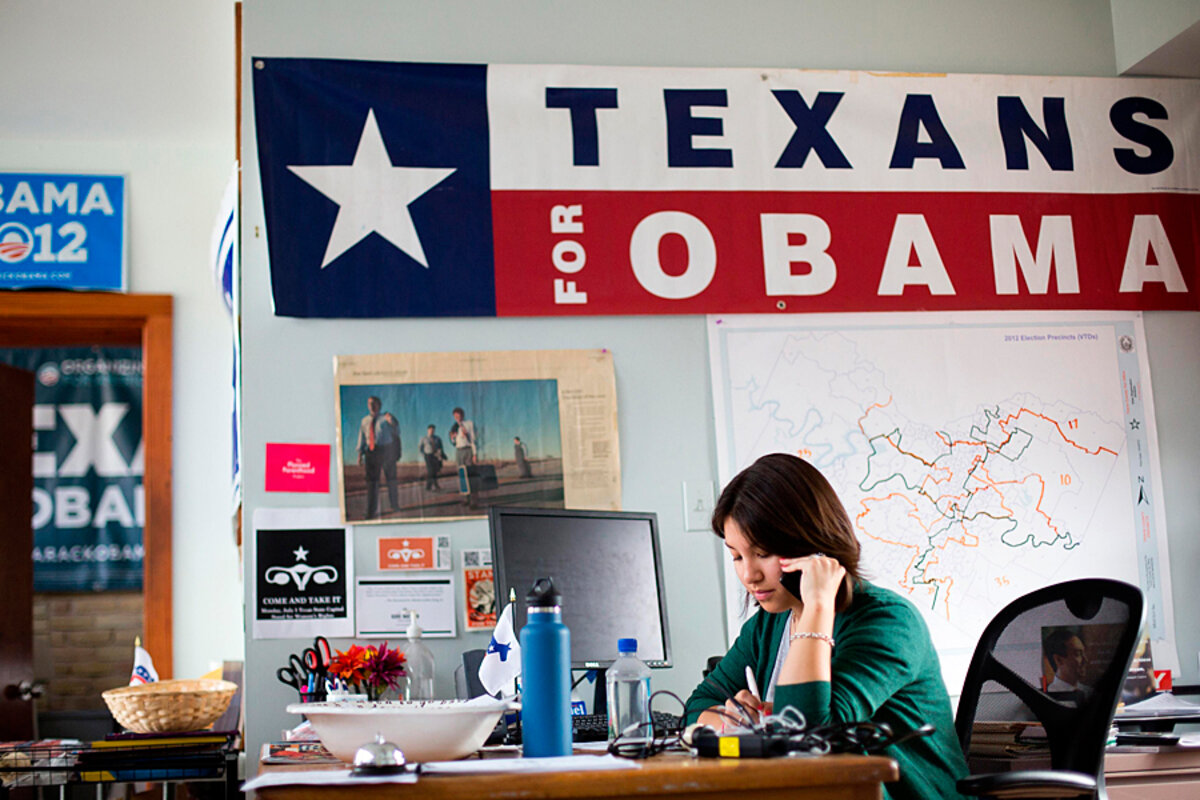Young voters more Democratic? That's not the whole story.
Loading...
| Washington
According to a young Americans are increasingly aligned with the Democratic Party. Survey results show that today 53 percent of voters age 18 to 29 are either Democrats or lean Democratic, up from 49 percent in 2006.
The Republican Party, correspondingly, has been losing ground, says Gallup. Thirty-five percent of young US voters identify today with the GOP, down from 41 percent in 2006.
One reason for this trend is the increasing racial and ethnic diversity of young adults, writes Gallup’s Jeffrey M. Jones. About 45 percent of this demographic is now composed of African-Americans, Latinos, and other non-white minorities, all predominantly Democratic. That’s almost double the comparable figure from 1995.
But white youths are also realigning politically. The tipping year was 2006, when for the first time in over a decade more young whites identified as Democrats than Republicans.
“Recent decades have brought significant shifts in Americans’ political allegiances, in the short term and the long term. While young adults have generally been more likely to align themselves with the Democratic Party than the Republican Party, they are now much more solidly Democratic than prior generations of young adults,” concludes Gallup’s Jones.
Well, we’ve got some comments here. The first is that this trend has actually been running the other way during the Obama administration.
If you look at the Gallup numbers, the Democrats’ share of young voters peaked in 2008 at 58 percent. That’s the year President Obama won election, of course.
Since then that figure has fallen five percentage points, while the GOP has gained two points among 18-to-29-year-olds.
This reflects the fact that the political allegiance of a particular age group is affected by lots of factors. One major influence is the economic and political environment of the nation at the time when members of that group cast their first presidential vote. If the economy is booming and the nation generally content, new voters line up with the incumbent chief executive. If things are gloomy, they go the other way.
And the economy has struggled for years. As George Washington University earlier this month, 18-year-old voters casting their initial ballot in 2012 broke for Mitt Romney over Obama. Romney won 19 and 20-year-olds, too.
“The political identities of future generations will depend on economic trends and the popularity of presidents who haven’t been elected. Maybe those factors will tend to break in Democrats’ favor, and maybe they won’t,” writes Professor Sides on the Monkey Cage political science blog of the Washington Post
In addition, the long-term Democratic trend among young voters has been somewhat offset by a corresponding realignment toward the GOP among seniors.
Voters aged 65 or older were a reliable Democratic constituency as recently as 2006. Now they’re generally GOP as a group, with 48 percent identifying as Republican in 2012, according to , and 45 percent identifying as Democratic.
That said the long view worries many Republican strategists. The US electorate is becoming progressively less white – and as noted above, ethnic and racial minorities tend to vote Democratic. Stalwart GOP elderly voters may decline as a share of the population while a huge number of currently young Democrats move into their thirties and forties.
In that context the coming midterms might give Republicans “false hope,” writes veteran political expert . They are set to make gains in 2014 in large part because the Democrats are defending a number of vulnerable Senate seats in red-to-purple states, and mid-terms favor the party out of the White House.
But that won’t help in 2016.
“The fact that midterm electorates are generally older, whiter, and more conservative than their counterparts in presidential elections exacerbates the difference between the world of 2014 and the one that will exist in 2016,” writes Cook. “The Republicans can win in 2014 without having fixed their problems.”





